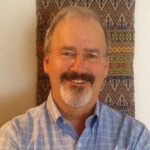Bring Back the Birds! Parting Thoughts on Partners in Flight V
By David Younkman

Bobolink, one of the focal species for the Partners in Flight V meeting. Conservation business plans started at the meeting will help bring back the population of this and many other migratory bird species. Photo: PA Game Commission.
In case you missed it last week, Partners in Flight V (PIFV)—a three-day conference and conservation Workshop held in Snowbird, Utah—was quite the event. More than 225 people (45 of them from Latin America and the Caribbean) from 120 agencies and organizations and 14 countries came together to chart the future for conserving America's migratory birds.
“Conserving?” No, more than that, for ABC President George Fenwick challenged the assembled group to do much more than just conserve the birds. He challenged the group to “bring back the birds”—to restore their numbers from their precipitous decline to the population levels they had only 50 years ago.
Like most conferences, PIFV was characterized by renewing old friendships combined with creating many new ones. Mornings started off with excellent plenary talks each day; evenings were capped off with poster sessions, receptions, and social gatherings of various kinds.
But unlike some other meetings, this one got straight to work creating conservation business plans for eight geographic regions that focused on “birds of high conservation concern” throughout their full annual life-cycle. Eight breakout groups identified threats and conservation strategies, and then outlined specific projects that will put those strategies into action and make a measurable difference for our birds.
What's next? All of the conservation business plans need much more work, and they will be continually evolving. Participation in further development of these documents must be broadened to include many individuals who were unable to attend PIFV. And the dozens (or even hundreds) of projects that emerge will each need to be fleshed out and funded. While PIFV was a terrific victory and a great accomplishment, it is only one big step in a longer, ongoing process.
Bringing back the birds will be a big job. But leaving this remarkable event, I can't ignore the feeling that our birds will be far better off because of these three days that we spent together in Utah.
 David Younkman is Vice President for Conservation at American Bird Conservancy and played a lead role in the planning for Partners in Flight V.
David Younkman is Vice President for Conservation at American Bird Conservancy and played a lead role in the planning for Partners in Flight V.


















































